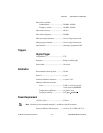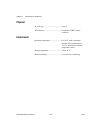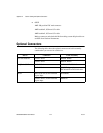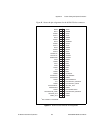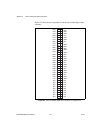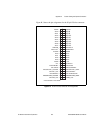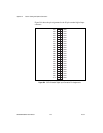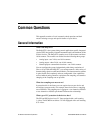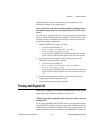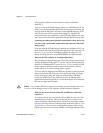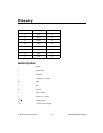
© National Instruments Corporation C-1 6023E/6024E/6025E User Manual
C
Common Questions
This appendix contains a list of commonly asked questions and their
answers relating to usage and special features of your device.
General Information
What is the DAQ-STC?
The DAQ-STC is the system timing control application-specific integrated
circuit (ASIC) designed by National Instruments and is the backbone of the
E Series devices. The DAQ-STC contains seven 24-bit counters and three
16-bit counters. The counters are divided into the following three groups:
• Analog input—two 24-bit, two 16-bit counters
• Analog output—three 24-bit, one 16-bit counters
• General-purpose counter/timer functions—two 24-bit counters
You can configure the groups independently with timing resolutions of
50 ns or 10 µs. With the DAQ-STC, you can interconnect a wide variety of
internal timingsignals to otherinternal blocks.The interconnectionscheme
is quite flexible and completely software configurable. New capabilities
such as buffered pulse generation, equivalent time sampling, and seamless
changing of the sampling rate are possible.
What does sampling rate mean to me?
It means that this is the fastest you can acquire data on your device and
still achieve accurate results. For example, these devices have a sampling
rate of 200 kS/s. This sampling rate is aggregate—one channel at 200 kS/s
or two channels at 100 kS/s per channel illustrates the relationship.
What type of 5 V protection do the devices have?
The PCI and PXI devices have 5 V lines equipped with a self-resetting
1 A fuse. The PCMCIA cards have 5 V lines equipped with a self-resetting
0.75 A fuse.



